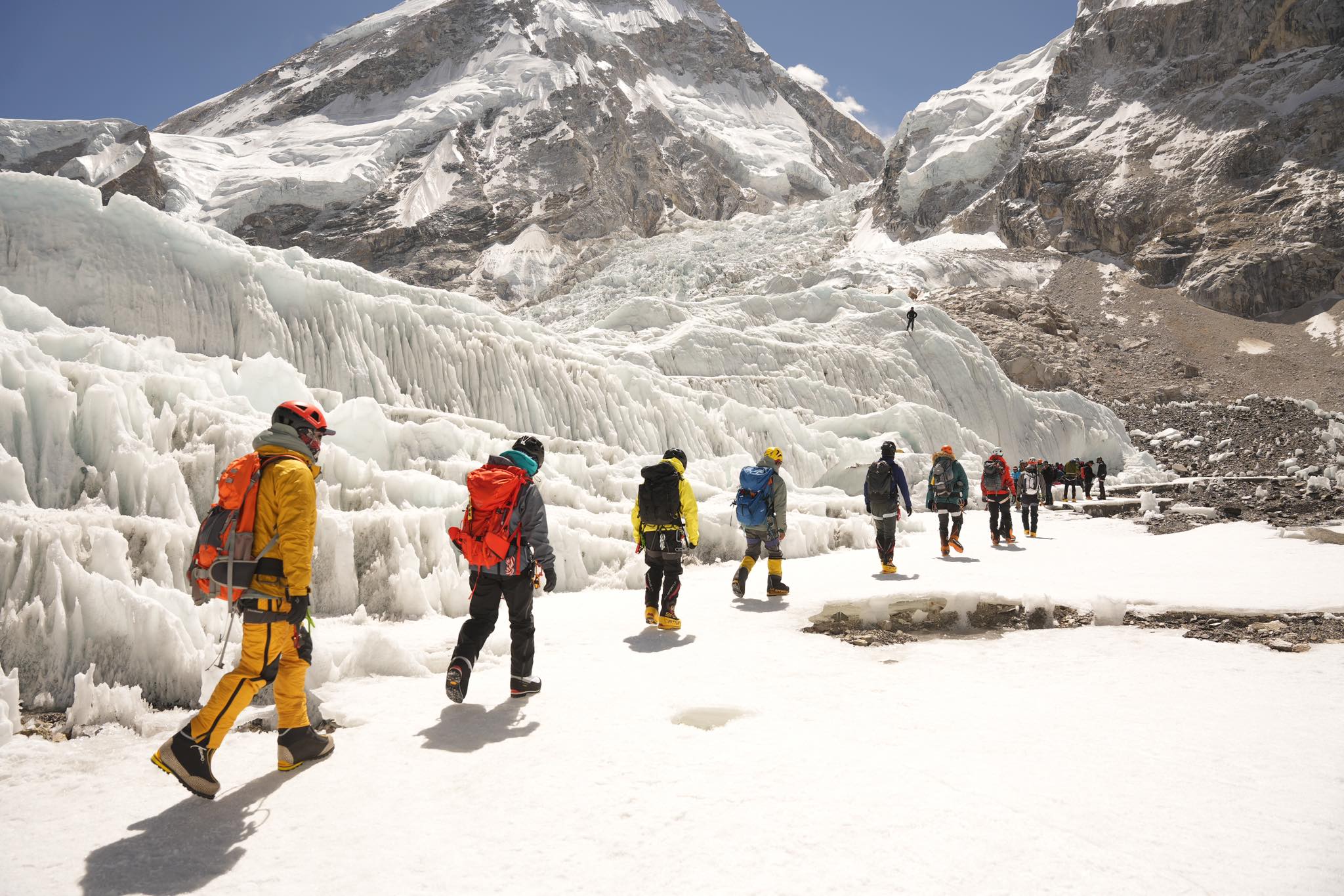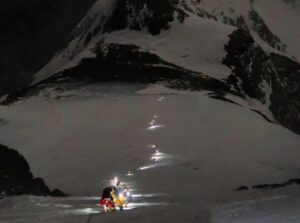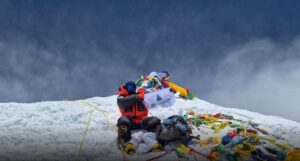Now that the Everest season is in full swing, we checked with our sources in Base Camp for a half-time report about this year’s new measures. (Not counting the well-meaning but doomed-from-the-start restrictions on helicopter use, that is.)
Khumbu authorities now require climbers to bring their own human waste down from the mountain. Climbers must also wear a “rescue chip” — in fact, a radar reflector of the sort commercialized by Recco.
The poo bags reflect an effort by the region’s Sherpa mayors to restrain the environmental and reputational impact of the climbing industry on the fragile mountain ecosystem. Meanwhile, the obligatory use of a radar reflector emphasizes the need for greater safety on the world’s highest mountain. Last year, 18 people lost their lives on Everest.
The present season will test the usefulness of the policies and whether they are enforced.
Currently, no one is checking whether every climber is carrying a Recco system. But high-altitude mountaineering boots made by Scarpa, Millet, and Asolo and most technical jackets and high-altitude down suits already have them, points out Lakpa Sherpa of 8K Expeditions. Check a list of Recco-equipped gear here.
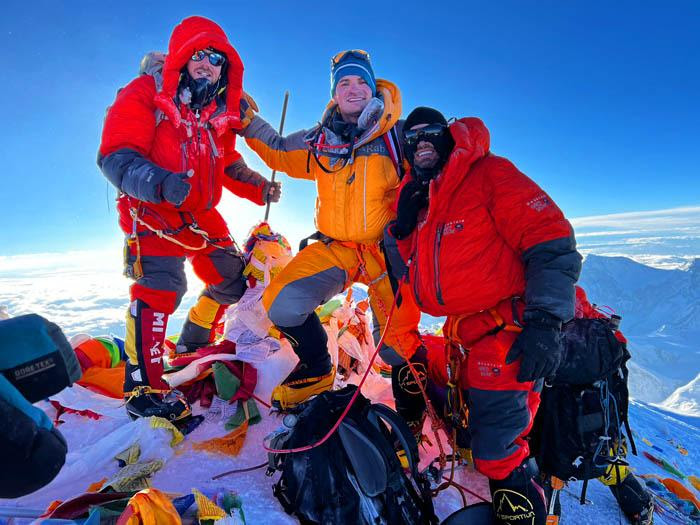
Climbers on the summit of Everest last year, wearing boots equipped with Recco reflectors. Photo: SummitClimb
Recco reflectors vs tracking devices
At first, Nepal authorities and the media announced that Everest climbers would have to wear a “rescue chip.” It turns out they were simply referring to these Recco reflectors. While common at ski resorts for avalanche rescues, its usefulness on Everest remains to be seen.
“The Recco is a passive reflector with an antenna, not so different from the EAS (emergency alert systems) attached to clothes in stores to prevent shoplifting,” Josep Anyols of Racetracker told ExplorersWeb.
The Recco reflector works in combination with a separate transmitter that emits waves. The reflectors bounce the waves back to the transmitter, which then beeps, Anyols explained.
Recco on Everest
Transmitters can be handheld or carried in a helicopter. The helicopter system can locate a climber at a maximum distance of 80m, even if the person is buried under two meters of snow. The smaller handheld device can find someone up to 20 meters away.
“Such devices are useful if you know exactly where the missing person is. For instance, in an avalanche,” Anyols said. “But Himalayan peaks are huge, and every minute counts. If a climber simply is reported lost with no further clues, such as by not showing up back in camp, rescuers can’t just go out and search, hoping to pick up the signal.”
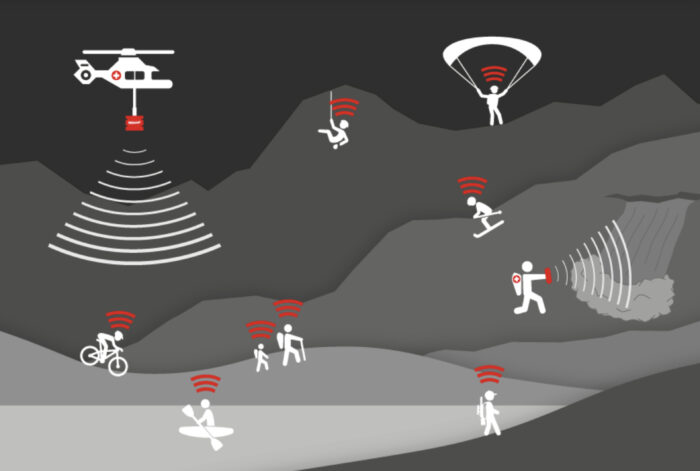
Screenshot showing Recco uses, from the company’s website
Also, a helicopter search is hard to conduct over vast areas, and impossible above the helicopter’s altitude limit, about 7,000m.
Satellite trackers
Meanwhile, a GPS tracker can locate a person everywhere, as long as it is emitting a signal. It also has bidirectional communication via SMS and a quick SOS signal.
How GPS tracking systems work. Photo: Racetracker
These devices work by connecting to a satellite network, usually Iridium. The satellite resends the signal home in seconds, Anyols said. “This is how you can see a person progressing on the mountain and can monitor their speed and direction,” Anyols explained. He added:
“When Alberto Zerain died in an avalanche on Nanga Parbat, his device marked his location until the battery died. Also, when Sergi Mingote first summited K2, he texted us on his way down, saying he couldn’t find Camp 4. We had him located and texted directions until he reached his tent.”
Sadly, Mingote perished years later, also on K2, during an attempted winter ascent.
These devices run on batteries, which can last up to 100 hours but eventually need recharging. They’re considerably more expensive than Recco, but their $350 to $500 price should hardly be a deterrent on a typical $50,000 Everest expedition.
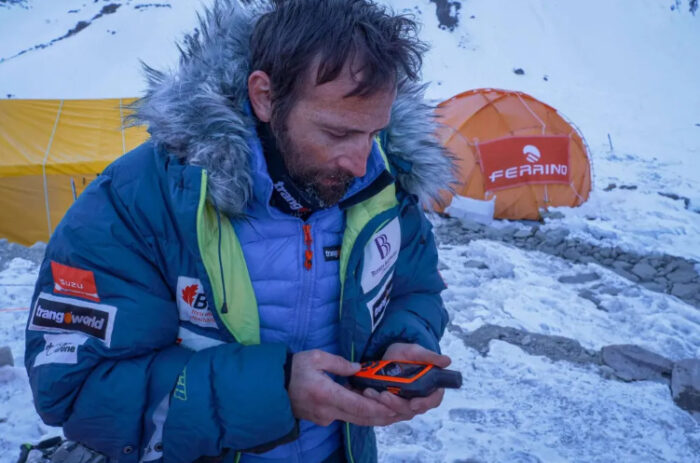
Alex Txikon checks his InReach device during a winter expedition. Photo: Alex Txikon
There is a wide range of GPS tracking devices for outdoor sports. The most popular for Himalayan climbers are SPOT or Garmin’s InReach.
Some companies even rent such devices. “A possible solution would be for all climbers to use [the same type of] GPS device, which is monitored from an office [in Nepal or Pakistan],” Anyols suggests.
Trackers are even compatible with the Recco system. “A lost climber could be tracked down via the GPS-based device, and then located by a ground or helicopter search in a specific area, using the Recco.”
Waste management
In the other new measure this year, all climbers must use wag bags and retrieve their human waste off the mountain.
Mike Hamil of Climbing the 7 Summits confirms that local authorities are serious about waste management.
“There has been a representative around our camp checking that we are removing all our human waste from the mountain, which is great,” Hamil said.
Hamil’s team deposits the refuse in a blue barrel at base camp for disposal. This compliance is easy for local reps to monitor.
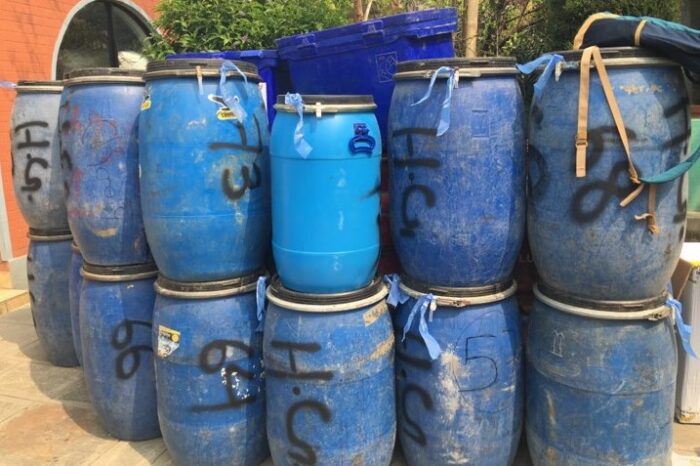
The ever-present blue plastic barrels. Photo: 360 Expeditions
“The poo bag regulation is being enforced and everyone has taken to it quite seamlessly,” Dawa Steven Sherpa of Asian Trekking told ExplorersWeb. “If any company doesn’t have poo bags, then the rural municipality has them on sale here. They are going from camp to camp and checking that we have the bags.
“Also, the heavy-lift drone has been doing three days of continuous testing. It looks very possible that soon it will be able to start hauling the toilet bags out.”
The Sagarmatha Pollution Control Committee is even taking steps to improve waste management beyond Everest Base Camp.
“We’re building a Material Recovery Facility (MRF) in Namche that further segregates and processes recyclables,” they report. “We have also signed an agreement with Khumbila Samrakshhan Pratisthan to build another one at Pangboche.”
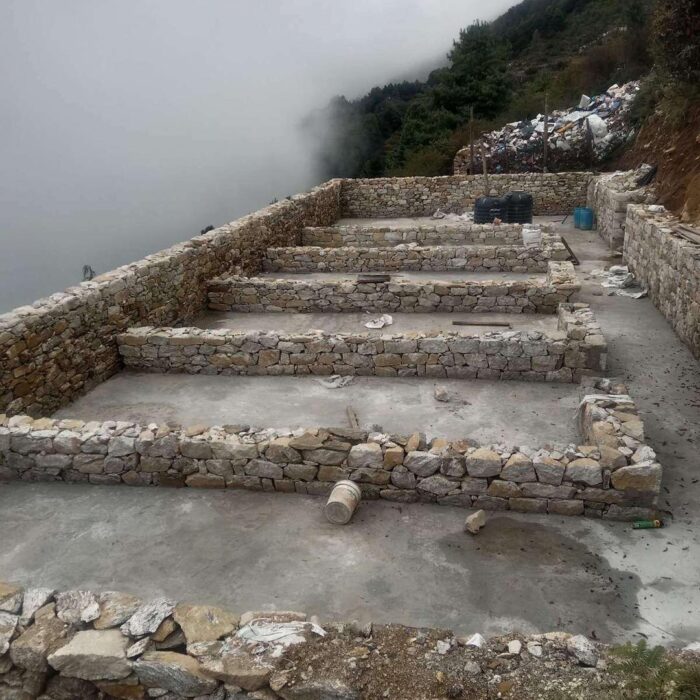
The future Material Recovery Center near Namche Bazaar, currently under construction. Photo: Sagarmatha Pollution Control Committee
